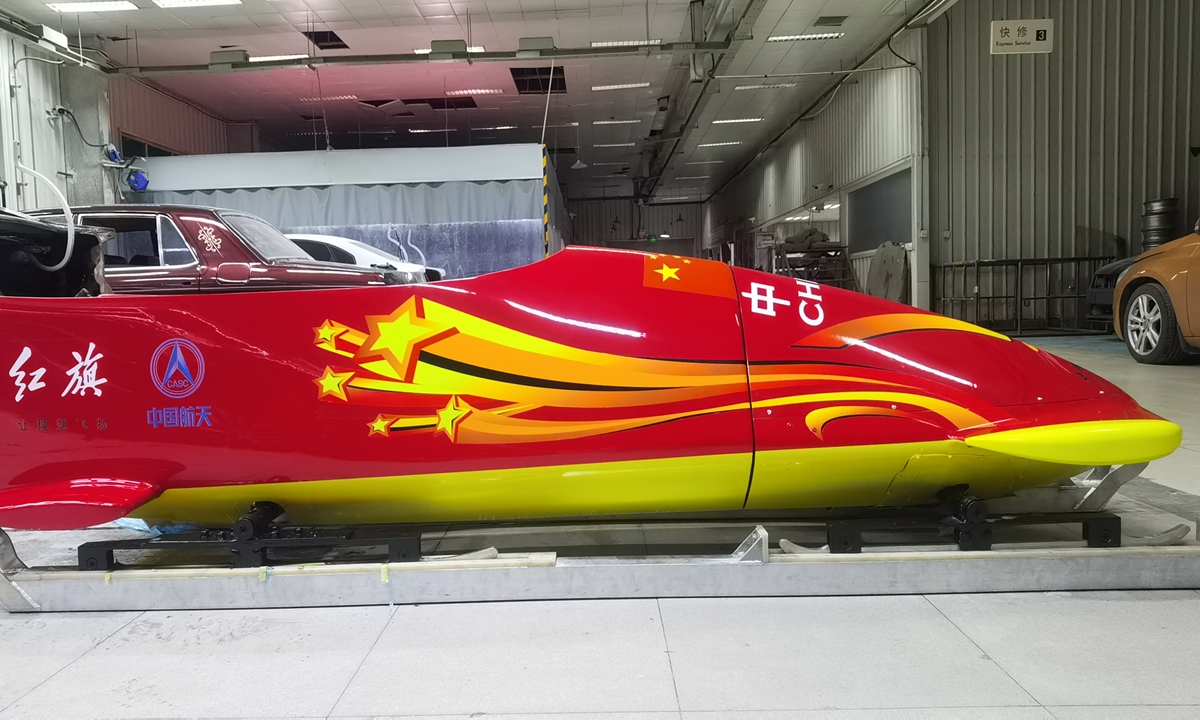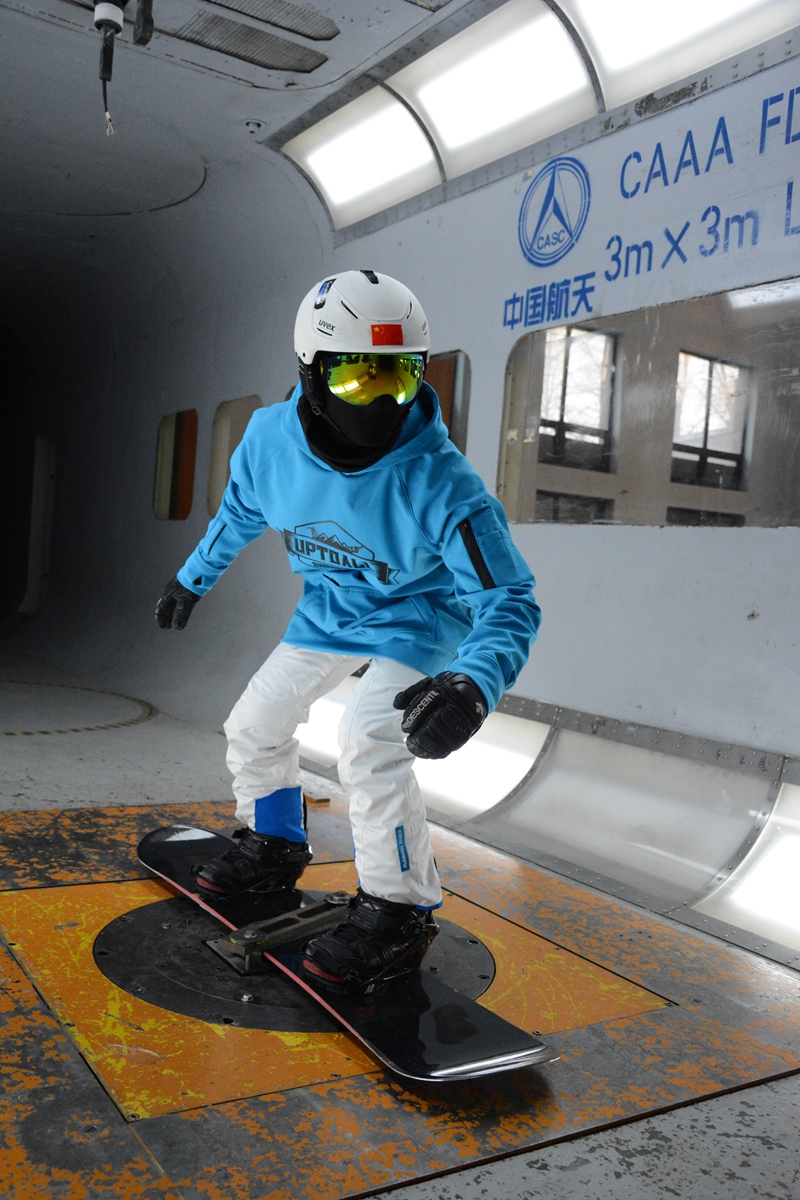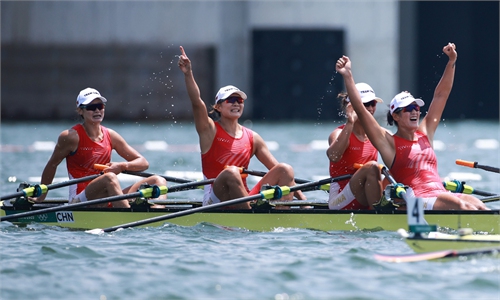China’s aerospace tech used in training of winter sports athletes, prepares Beijing Winter Olympics

China's first self-developed sleigh developed with the help of aerospace technologies. Photo: courtesy of CAAA
As the Tokyo Olympics came to a successful end and the Beijing Winter Olympics lies around the corner in six months, China's aerospace technologies have joined forces to fire up Team China's performances in the upcoming Games.
With the help of aerospace technologies, the country's first self-developed sleighs with advanced capabilities have been rolled out and they are expected to debut in the 2022 Winter Olympics. Wind tunnels, designed by the country's space giant, are also being used in everyday training for athletes.
Bobsleighing is a traditional sports event in the Winter Olympics, which was largely dominated by Western teams in previous games. The Chinese team was only founded in 2016, and made its first appearance in the Winter Olympic Games in 2018.
Due to its late start, the Chinese team has been relying on imported sleighs for training and competitions, but it lacks domestically developed equipment.
This absence led to a series of issues, including the lack of customized designs to better fit the individual characteristics of athletes, and as a result, weighed on their performances. Meanwhile, it has contributed to a low degree of popularity of winter sports among the Chinese public.
To solve these problems, China's first self-developed sleighs have been rolled out with the help of the country's aerospace technologies, and they are expected to be delivered to Chinese athletes in mid-September and make their debut in the 2022 Beijing Winter Olympics.

A skier tests different types of sportswear in a wind tunnel. Photo: courtesy of CAAA
These homemade sleighs have gone through a series of wind drag tests at the China Academy of Aerospace Aerodynamics (CAAA,) a subsidiary under state space giant China Aerospace Science and Technology Corp, and their shapes have been optimized to have lower resistance and higher speeds, the Global Times learned from the CAAA on Thursday.
Compared with sleighs purchased from overseas, the new ones have an 8 percent lower wind drag level, which will be a significant boost to athletes' performances.
What's more, the homemade products can better suit the bodies and weights of Chinese competitors, and the sleighs use a special aerospace material that would further enhance its capabilities.
A wind tunnel developed by the CAAA is also being used in training Chinese athletes for the 2022 Winter Olympics. The maximum wind speed can reach 100 meters per second in the tunnel.
It covers the range of wind speeds for almost all winter sports events. Tests of the athletes' performances in the tunnel can provide data for the optimization of sportswear and equipment to reduce wind drag, and it will help athletes to find the best postures and team formations, the Global Times has learned.
For events with high requirements for posture in determining speed, such as skiing, athletes can test different types of sportswear in the wind tunnel to find the one best suited in terms of materials, knitting, density and thickness.
"The role of science and technology will become increasingly important in today's competitive sports. Although athletes spare no effort in trying to be the best, there is always a physiological limit to human abilities, and that's why we will use technology to assist and guide them to perfect their performances," said a statement the CAAA sent to the Global Times on Thursday.
Apart from aerospace technologies, a number of other high technologies will be used in the 2022 Winter Olympics. The Chinese National Speed Skating Oval will be the first venue in the Winter Olympics' history to use carbon dioxide as a refrigerant, which will secure a temperature gap on the ice surface of no more than 0.5 C, ensuring a harder and smoother ice surface.

